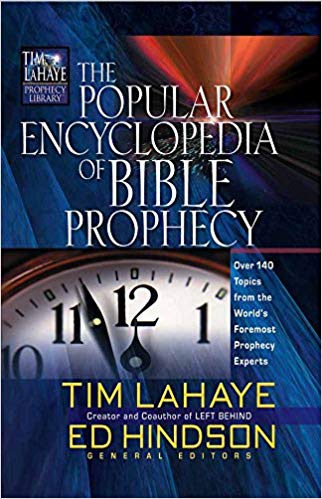AGES OF TIME Part I

THE POPULAR ENCYCLOPEDIA OF BIBLE PROPHECY
AGES OF TIME Part I
AN IMPORTANT BIBLICAL PHRASE in Bible prophecy is “the age to come.” A understanding of a related term, “the present age,” is also necessary for properly interpreting biblical prophecy. “The present age” refers to the current church age that began almost 2000 years ago on the Day of Pentecost when the church was founded. It will end with the rapture of the church. “The age to come” is a reference to the millennial kingdom that will commence with the second coming of Christ and continue for 1000 years (Revelation 20:3).
THE MISUNDERSTANDING
Many amillennialists, postmillennialists, and preterists believe that “the age to come” refers to the current age in which we now live. Some say this began at Christ’s first coming, while others say it began at Christ’s supposed return in A.D. 70. Gary DeMar (pp. 69–70) says, The “end of the age” refers to the end of the Old Covenant redemption system with its attendant sacrifices and rituals.…The “end of the age” refers to the termination of the exclusive Jewish entitlement to the covenant promises and the inclusion of the Gentiles into the blessings of the covenant and the privi- leges of the gospel and kingdom (Matthew 21:41,43; 22:10). “End of the age” is a covenantal phrase. With the temple destroyed, there would be no way and no need to carry out the rigorous demands of the sacrificial system, a system that was predestined to pass away with the incarnation, death, resurrection, ascension, and enthronement of Jesus. Preterists tend to believe that the phrase “present age” or “this age” refers to the approximately 40-year period between the earthly ministry of Christ and the de- struction of Jerusalem in A.D. 70. Thus, as DeMar indicated, that means that after A.D. 70 we are in what the Bible refers to as “the age to come.” Full preterists (those who do not believe in a future second coming) believe that Jesus’ reference to “this age” applies to the Mosaic age in which he was living, and the “age to come” is the Christian age. Thus, they view the church as already living in the “age to come.”
THE PERSPECTIVES
Jewish Perspective of Bible Prophecy
The Jewish perspective of Bible prophecy divided history into two ages. The first was “this present age,” the age in which Israel was waiting for the coming of the Messiah. The second was “the age to come,” the age in which God would fulfill all His promises and covenants, and Israel would enter into her promised blessings as a result of Messiah’s coming. “The present age” would end at the appearance of Messiah, and “the coming age” would begin with His advent. “The present age,” then, would end in judgment, and “the coming age” would be preceded by this devastation. The disciples questioned Jesus on the Mount of Olives (Matthew 24:3), linking His words of judgment about the destruction of the Temple with the invasion of Jerusalem that Zechariah predicted. The disciples believed this would precede the advent of the Messiah. In Zechariah 14:4 (NASB) the prophet describes the advent of Messiah to institute His kingdom as follows: In that day His feet will stand on the Mount of Olives, which is in front of Jerusalem on the east; and the Mount of Olives will be split in its middle from east to west by a very large valley, so that half of the mountain will move toward the north and the other half toward the south. This coming was to be preceded by an invasion and capture of Jerusalem (Zechariah 12:1-3; 14:1-3). However, Messiah would come from the Mount of Olives to deliver Jerusalem (Zechariah 14:4-5) and usher in the glory of the kingdom (Zechariah 14:14-15). This is when the “age to come” would arrive.

